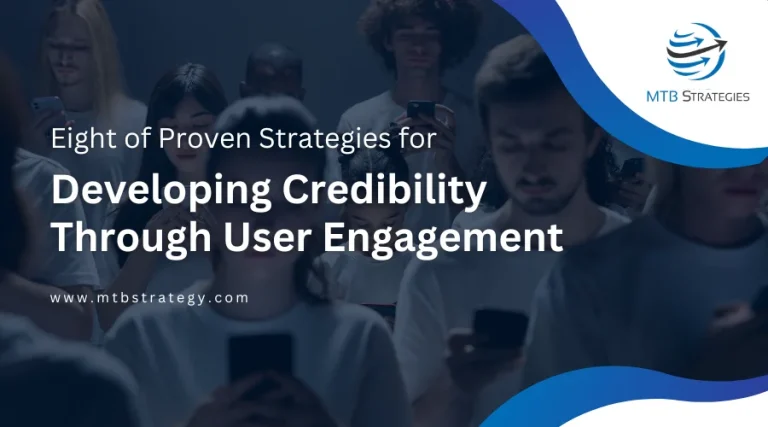One of the most crucial things to do is to comprehend the buyer’s journey and optimize it to maximize efficacy.
Rethinking the Buyer’s Journey: A Modern Approach for Digital Marketing Agencies
One of the most crucial things for any Digital Marketing Agency is to understand the buyer’s journey and optimize it to maximize efficacy.
The issue is that the conventional paradigm makes numerous, out-of-date, and frequently flat-out false assumptions about human behavior. The old model’s constraints and presumptions cause marketing priorities to be incorrectly positioned. It’s impossible to know what people actually want and how to provide value to them when people in a market are not understood.
We must radically reimagine the customer journey and how to drive conversions if we are to build strong relationships between companies and customers.
The Problem with the Traditional Buyer’s Journey
The journey paradigm, in use for many years, is no longer producing the best outcomes. Because it doesn’t put a priority on connecting with customers, it deceives marketers, ignores changes in customer behavior, and lowers ROI across channels.
The typical buying process consists of three stages at its most basic level:
- Awareness: When the audience becomes aware of the issue or pain point they must address it.
- Consideration: At this point, the audience has a firm understanding of the issue at hand and has started looking into all available options.
- Decision: The decision stage is when the audience has a clear understanding of their issue, is aware of a potential solution, and is starting to choose a brand from their shortlist.
Does it operate?
Not really. The traditional buyer’s journey’s primary flaw is its attempt to impose a linear path and sales procedure from awareness to transaction. People behave quite non-linearly in reality.
A new approach should respect consumers’ evolving perspectives and intellect. Most importantly, it should give them value rather than requesting it in order to serve them on their terms. It’s time to reassess your brand marketing strategy if it doesn’t revolve around this primary objective.
The Actual Customer Journey
It is important to recognize a philosophical shift in consumer desires and behavior in order to fully comprehend the customer journey. Do you really think your target audience wants to be greeted with a push down the marketing funnel to the transaction while also being requested for value (time, money, purchases, subscriptions, emails, and personal information)?
In actuality, none of us are searching for it. We want to find the greatest solution to our issues while still having the best experience possible. Potential customers are not generated by the interruptive strategy. Consumers trust brands that are aware of what they are looking for and are willing to deliver it (without pushing).
Researchers from the Ehrenberg-Bass Institute for Marketing Science, led by Professor John Dawes, have produced findings that require marketers to reconsider the conventional customer journey model. Brands can develop their marketing to focus on creating actual, long-lasting connections with their customers by making significant modifications to the model.
There are only two stages in the actual customer journey, plus a few “micro-moments”:
- Research: Consumers spend 95% of the customer journey in the research stage searching for solutions to issues and pertinent material.
- Buying: The buying stage, which takes up 5% of the customer experience, is when consumers are truly connected and engaged enough to make decisions and buy.
The Finding
A change in perspective happens when marketers realize that consumer audiences do not fit neatly into “stages” and begin considering them as genuine people with various needs, wants, and shifting perspectives. Brands must now honestly connect with their potential customers in order to gain their business, trust, and loyalty. They can no longer rely on outdated marketing strategies to compel consumers to make a purchase.
Several issues become apparent when the awareness, consideration, and choice paradigm is reviewed:
- Marketers fail to prioritize the needs of the customer.
- Marketers fall into the transaction trap, where they solely concentrate on transactions rather than developing trust throughout the entire funnel.
- Marketers ignore what the audience wants.
- Marketers ignore consumer behavior data.
Is it any surprise that marketing is fragmented when you consider the outdated approach and the restrictions listed above? What can Digital Marketing Agencies do about it?
A Plan That Aligns with the Actual Customer Journey
Search intent data and controlled asset optimization are necessary in order to develop a strategy that accurately represents real consumer behavior and consistently provides value to audiences at every contact.
We must really understand what the audience wants, when they want it, how they’re seeking it, and how we can give it to them. This data is gathered by search engines each time a user conducts a search, so you may find it there.
You can fully listen to and comprehend the desires of your audience thanks to this search intent data. After that, incorporate them into a coordinated plan that aims to offer the value that your audience is seeking.
Begin With Search Intent Information
Marketers can use search data to get precise, real-time information about both broad and specific consumer intent. Consumer intent can be more accurately predicted by search intent, which actually reveals what customers want and how to fulfill it.
Using Owned Assets to Build a Customer Journey
Hundreds or maybe thousands of distinctive online properties are owned by brands. Examples comprise:
- Landing pages
- Blog Posts
- Company websites
- Publishing venues
- Online personas.
Each of these can be utilized in the context of the customer journey to satiate the audience’s various wants and needs.
The asset optimization procedure entails, broadly speaking:
- Gathering and studying customer search intent information
- A list of all the things you own
- Creating newly owned assets for any gaps
- Maximizing each owned asset to achieve specified objectives and provide consumers with value
- Iterating and updating the assets when the needs and position of the brand change
The Genuine Customer Journey and Assets
Brands may move from the outmoded, linear customer journey model to the fluid, more realistic 95:5 customer journey model by prioritizing their owned assets.
Every asset in a brand’s network expands its reach and serves the demands of new audiences while continuously delivering real value to every visitor.
Asset optimization influenced by user search intent:
- Makes fostering customer relationships a top priority.
- Opens up genuine consumer desire
- Gives consumers value up front and doesn’t “push”
- Builds a digital infrastructure to assist customers in a way that suits them
- Shifts the focus of transactional tunnel vision to the 95% of customers who are looking for answers
- Creates trust each time a customer accesses one of a brand’s resources
- Increases ROI for ALL marketing initiatives
Final Reflections
Modern brands should strive to cultivate genuine connections with their audience. The brands that people trust triumph in all industries. It takes a lot of work to earn your clients’ trust, and relatively few brands truly succeed in doing so.
Our owned asset first concept transforms marketers from value takers to value givers and places a strong emphasis on connecting with customers at the right time. This strategy revolutionizes marketing efforts with creativity, intentionality, and intelligence while assisting organizations in actually understanding and listening to consumer demands.






